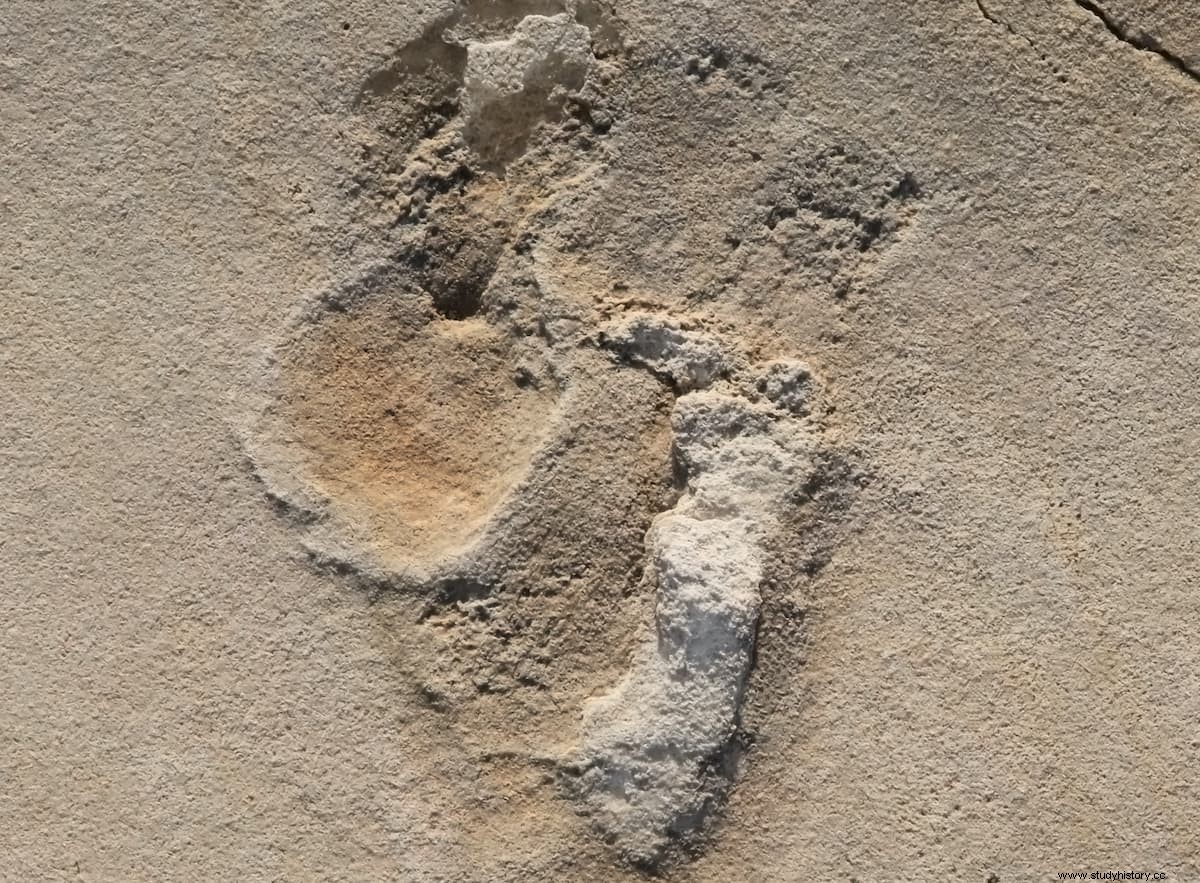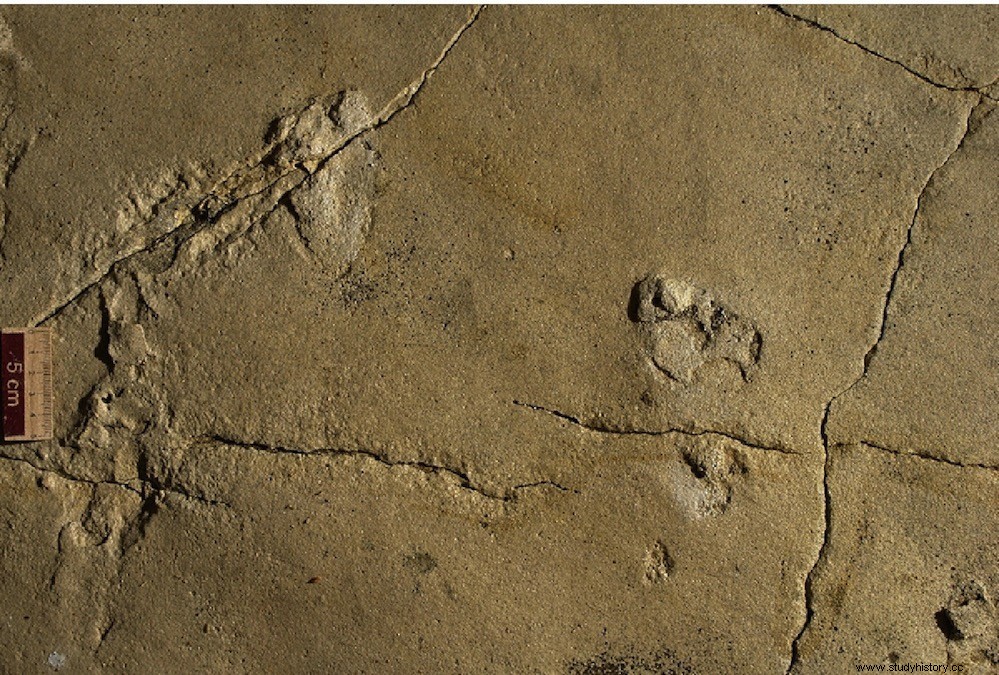The oldest known footprints of early hominins were found on the Mediterranean island of Crete and are at least six million years old, says an international team of researchers from Germany, Sweden, Greece, Egypt and England, led by scientists Uwe Kirscher. and Madelaine Böhme, from the Senckenberg Center for Human Evolution and Paleoenvironment at the University of Tübingen. Their study has been published in the journal Scientific Reports .
The footprints in fossilized beach sediments were found near the western Cretan village of Trájilos and were published in 2017. In our article about it that year, titled Footprints Discovered in Crete May Force a Review of the Chronology of Human Evolution, we said :

Using geophysical and micropaleontological methods, researchers have now dated them to 6.05 million years BP (Before Present), making them the oldest direct evidence of a human-type foot used for walking.
The footprints are almost 2.5 million years older than those attributed to Australopithecus afarensis (Lucy) from Laetoli, Tanzania says Uwe Kirscher. This places the Trájilos footprints at the same age as the Orrorin tugenensis fossils. from Kenya, who walked upright. Finds related to this biped include femurs, but no foot bones or footprints.
The dating of the Cretan footprints thus sheds new light on the early evolution of human perambulation more than six million years ago. The earliest human foot used for upright walking had a sole with a strong parallel big toe, and successively shorter lateral toes , explains Per Ahlberg, professor at Uppsala University and co-author of the study. The foot had a shorter sole than that of Australopithecus. The arch was not yet pronounced and the heel was narrower.
Six million years ago, Crete was connected to the Greek mainland through the Peloponnese. According to Professor Madelaine Böhme, we cannot rule out a connection between the maker of the footprints and the possible pre-human Graecopithecus freybergi . Several years ago, Böhme's team identified this previously unknown pre-human species in present-day Europe from fossils from 7.2-million-year-old sites in Athens, just 250 kilometers away.

The study also confirms recent research and thesis by Böhme's team, according to which six million years ago the European continent and the Middle East were separated from East Africa by a relatively brief expansion of the Sahara. Geochemical analysis of six-million-year-old beach deposits on Crete suggests that desert dust from North Africa was blown there by wind. The team arrived at an age of between 500 million and 900 million years before present by dating dust-sized mineral grains. These time periods are typical for North African desert dust, the authors said.
Recent research in paleoanthropology also suggested that it could be ruled out that the African ape Sahelanthropus was a biped, and that Orrorin tugenensis , originally from Kenya and who lived between 6.1 and 5.8 million years ago, is the oldest pre-human in Africa, says Böhme.
Thus, short-term desertification and the geographic distribution of early human predecessors might be more closely related than previously thought. On the one hand, a desertification phase 6.25 million years ago in Mesopotamia could have initiated a migration of European mammals, possibly including apes, to Africa.
On the other hand, the second phase of the sealing of the continents by the Sahara 6 million years ago could have allowed a separate development of the pre-human African Orrorin tugenensis parallel to a European prehuman. According to this principle, called by Böhme desert oscillation , the successive short-term desertifications in Mesopotamia and the Sahara caused a migration of mammals from Eurasia to Africa.
